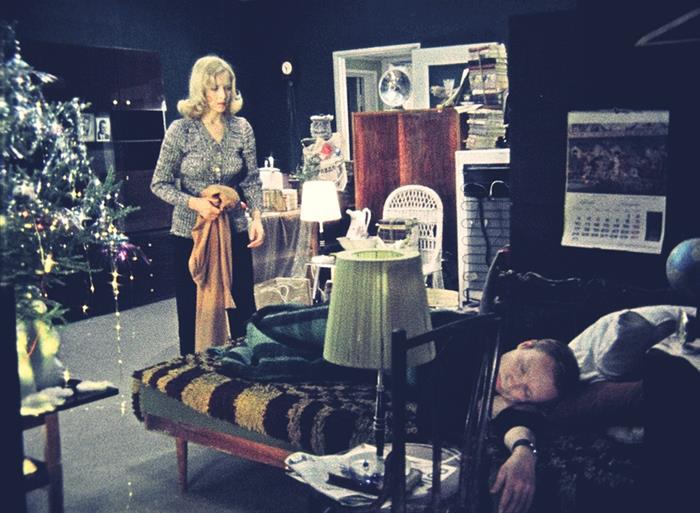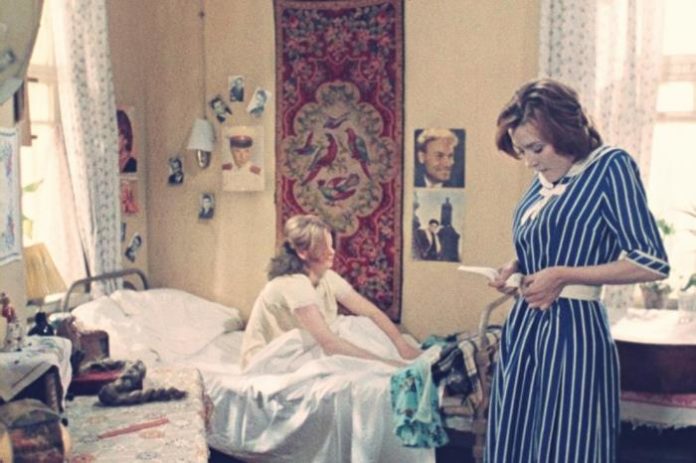Soviet interior design was divided into mass production, which in some of its forms was monstrously boring; and exhibition, which is usually analyzed by art historians and designers. Let’s see what an interior design looked like in the apartments of the highest-grossing films of the Soviet era.
Popular films of the USSR reflect a bygone era and immerse the viewer in all the details of the life of the Soviet people. This effect is possible largely due to the design of apartments and houses where protagonists live on the screen. The details of the cinema interiors often complement the characters of people and reveal the intent of the scenes. That is why art directors have always paid special attention to
For some objects of the Soviet time evoke sad thoughts about the shortage of goods, while other reminiscent of sweet images from childhood and adolescence. Some attributes of the “Soviet-style” inspire modern designers. They fit well into the concept of a modern interior, giving it a special charm and emphasizing continuity.
Two-room soviet apartment in Sochi (Film: The Diamond Hand, 1968)
Leonid Gaidai’s cult comedy was shown in April 1969 and soon became the leader of the Soviet film distribution. It was watched by 76.7 million viewers. The central character of the film is Semyon Gorbunkov with his wife and children lives in an apartment in Khrushchev house in Sochi. By that time, millions of people in the USSR received separate housing. Small apartments with narrow corridors and tiny kitchens became a symbol of new comfort, replacing communal apartments and old barracks.
The interior of a two-room apartment of a senior economist “Giproryby” by modern standards looks modest. In the hall, there is a sideboard in the color “walnut”, traditional glassware behind the glass, several statuettes, chairs with soft red upholstery, an old black and white TV “Start-3”. For the 1960s, such an environment looked quite stylish and relevant. The well-being of the family is evidenced by the polished table, lacquered parquet, and floral painted plates. Decorative metal screens, masking cast-iron “accordions”, another detail that gives Gorbunkov connoisseurs of interior fashion.

The apartment of an average scientist (Film: Ivan Vasilyevich changes his profession, 1973)
Another Soviet comedy film, based on Bulgakov’s play “Ivan Vasilyevich”, broke records in 1973. Almost the entire film was scattered on winged expressions and quotes. The events take place in a residential high-rise building at Novokuznetskaya Street, 13. At the time of filming, the pink brick house with a recognizable zigzag facade was completely new and created an additional contrast with the era of Ivan the Terrible. The very same scenes in the apartment of a talented engineer
Shurik’s dwelling consists of a large room, a kitchen, a hallway and an office with a time machine. It looks much more modest than the apartment of his neighbor dentist Shpak. The protagonist played by Demyanenko has no foreign cameras, tape recorders, antique furniture and collections of China. Everything is much simpler: a single-door refrigerator, a minimalist white kitchen, a few bookshelves and a black and white TV “Rubin-106”. Wall pots, aquarium and posters with the image of his wife Zinochka are
used as interior design decorations. Shurik’s kitchen to the middle of the wall is decorated with white glossy tiles of 15×15 cm – Soviet classics. But the curtains on the windows look modern even today.

Brezhnev houses layout features (Film: Irony of Fate, or Enjoy Your Bath!, 1975)
The New Year’s film, the most beloved by the citizens of the USSR and the post-Soviet republics, was first presented on January 1, 1976. At the request of the audience, the film was shown again a month later. It became a parody of the monotony of typical Brezhnev buildings. Streets with the same name, similar apartment layouts and identical door locks played a cruel joke with the characters filmed by Eldar Ryazanov. Filming of Moscow and St. Petersburg scenes took place in the capital. Both buildings are located on Vernadsky Avenue – these are panel houses 113 and 125, located 700 meters from each other. Today they are decorated with memorable tablets dedicated to the film.
Nadia Sheveleva and Zhenya Lukashin live in a 32-meter two-room apartment on 3rd Stroiteley Street, 25. Both moved in recently. There are still unpacked boxes, and a stepladder replaces the rack In Nadya’s apartment. There is a kerosene lamp, a Zhostovo tray, a sewing machine, a dummy and cans decorated with Gzhel. Lukashin has fashionable lamps “Candle” and a mirror in the shape of a heart. And he also owns a piano – a sign of an intelligent and developed family. In general, these are typical Soviet apartments, filled with serial furniture. It is found that the heroes have the same cabinets, family screens and even the scarce Polish headset for 830 rubles.

The luxurious interior design of the top management’s housing (Film: Moscow does not believe in tears, 1979)
The melodrama of Vladimir Menshov was highly appreciated not only by Soviet citizens. The film in 1981 received an Oscar as the best foreign film. The main character Ekaterina Tikhomirova has time to evaluate various options for Soviet housing. At first, it is a room in a factory dormitory that she shares with two friends. There are the staples of the
Becoming the director of the plant, the character played by Vera Alentova moves into her own apartment. This is a prestigious new building of yellow brick, one of the houses on Mosfilmovskaya street. The spacious living room is decorated with a wall mounted cupboard which was very hard to get at the time. There is an additional portable TV in the kitchen, and Alexandra’s daughter has a personal reel tape recorder. All these are attributes of wealth and well-being. Opposite the cupboard is a “soft corner”: a set of two yellow chairs and a sofa bed. The latter transforms in a couple of minutes: in one of the episodes, the characters clearly demonstrated this possibility.






Hull wanted to shoot in a way that felt off-center, that created the idea of “being trapped in a bubble of politics, and being cut off from the way the rest of the world was moving forward.” Along with the look of late Soviet decay captured by production and design staff, these kind of filming decisions underscore the tagline of the miniseries: “The cost of lies.” The look of
Comments are closed.